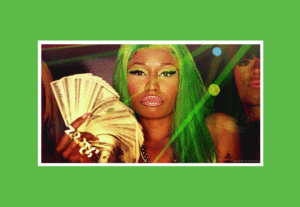The Creative Economy – the Caribbean Way
Author: Sonja Dumas

The United Nations Conference on Trade and Development (UNCTAD) designated 2021 as the year of the Creative Economy – a term that has been around for at least two decades and which seeks to recognize and quantify the economic contribution made by the creative sector. That sounds good on paper. But in reality, as anyone working in the sector can tell you, the sector itself is an amorphous one.
Definitions
How does one define the word “creative”? And does it mean that all creative activity can be classified as an economic engine? Even the word “creative” started life as an adjective and is now – because of the focus on the creative economy – a noun. So instead of “I am creative” it’s often “I am a creative”.
Go figure. But in the pelau 🍚 that is the creative sector, some people and institutions have attempted to define parameters for what constitutes a creative economy. And in the case of Latin American and Caribbean region, orange is the new black.
The Juicy Part
An Inter-American Development Bank (IADB) 2013 study coins the term “Orange Economy” and defines the cultural economy as “composed of all traditional artistic activities, all activities related to the preservation and transmission of cultural heritage, and the Conventional Cultural Industries”. This activities range from visual and performing arts to publishing and filmmaking and everything in between. The architects of the document chose the colour orange 🍊 as a mascot of sorts because, they say, that colour has long been associated with culture, creativity and identity. They cite several cultural examples in the study. I have my own opinion. Like any creative activity using culture as its bedrock, the word ‘orange’ is unique: it’s the only word in the English language that doesn’t rhyme with any other word. The takeaway: it will not be easily tamed or defined.
The Past
Beyond nomenclature, however, this is a world into which the Caribbean fits naturally and powerfully. For at least a century, we’ve been the purveyors and developers of participatory Carnival and other rituals that often spawn activities that are closely aligned with entrepreneurial and economic growth. In 1921 Walter “Railway” Douglas opened the first calypso tent, drawing on the growing interest in competition between the first generation of dedicated calypsonians who came out of the barrack yards of colonial Port of Spain.
Fast-forward to contemporary Trinidad and Tobago Carnival and the number of expensive fêtes that emerge each Carnival season. A successful fête is an entrepreneur’s dream. That Carnival started as a ritual of the Catholic Church centuries ago seems as remote a concept as having no Carnival at all, but, on both counts, in a pandemic world, here we are.
The Future
The important thing to remember is that Caribbean people have intuitively had this creative economy thing down long before any formal report was written. That said, the report indicates that the contribution of Trinidad and Tobago’s creative sector to the economy was 4.8% – the same percentage as Mexico for the same 2013 period. The IADB continues to support the creative sector in the region from a policy point of view. The big question is – how do we take our century-long entrepreneurial expertise and this shape-shifting thing called creativity to the next level in 2021 and beyond? Check out some thoughts in the coming articles.





